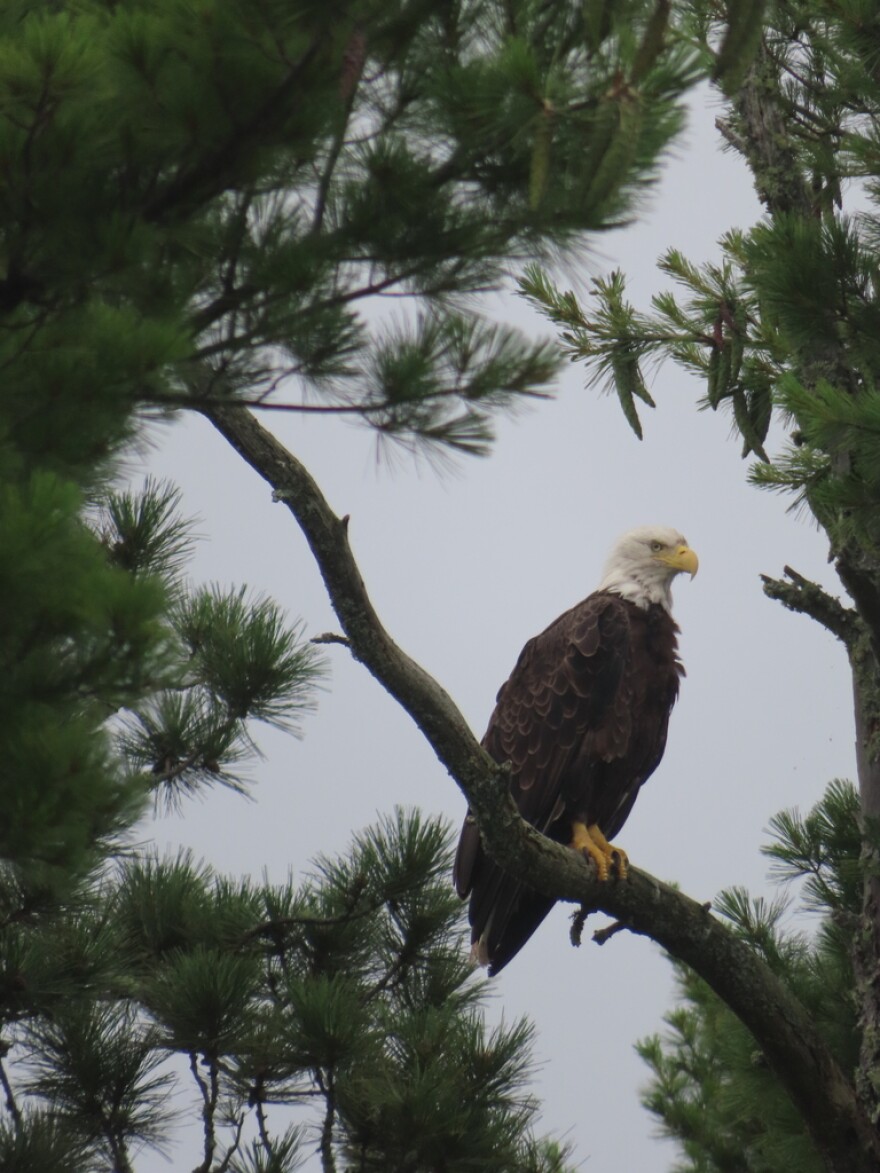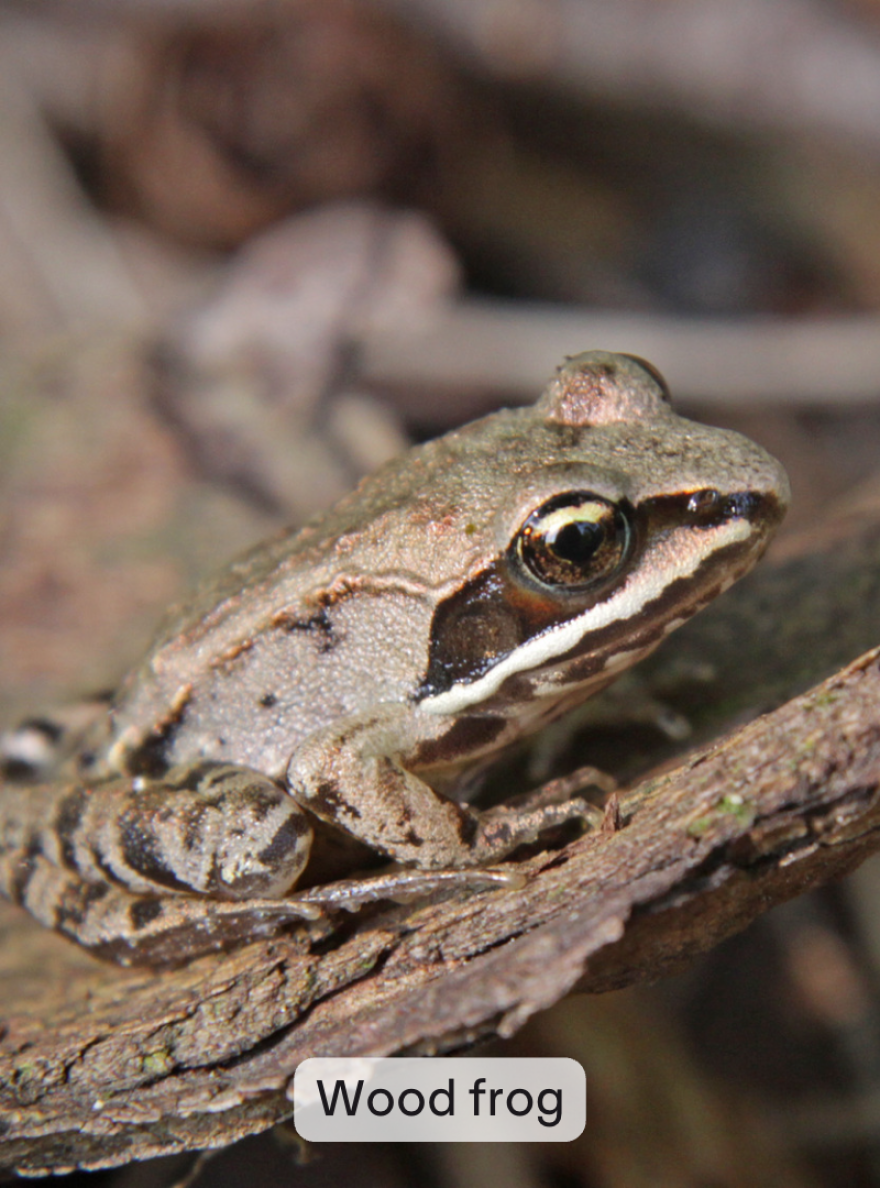You better watch out, and you might as well cry!
John Latimer’s in a state this week, and unfortunately for him, that state is Minnesota.
We’ve all been hoping for spring, and — much to his dismay — John has no good news to give us. In his prelude to the phenology show, he states, “I’m afraid that my phenology show today is all aligned to dash your hopes. So ... stay tuned?”
Do you have observations to share? We’d love to hear from you! Get in touch with me (smitchell@kaxe.org), John Latimer (jlatimer@kaxe.org), or text "phenology" to 218-326-1234.
Report from Mahtowa: Snowy and cold

John begins the report by reading an email from Joel Rosen, a phenologist in the Mahtowa area. He said, “Not much happening yet. First chickadee spring song on the 19th, but nothing since then. No skunk smelled, nor have I seen a dead one on the road yet.
“No returning birds seen or heard yet. Goldfinches have been here all winter. Pine Grosbeak seemed to have departed about a week ago, but the Evening grosbeaks are still around in reduced numbers. Mixed in with the goldfinch flock this morning, I saw one male showing a small patch of yellow plumage.
“I’ve been doing some crust skiing the past few mornings, but the crust season is late. So far, shaded areas still don’t hold my skis up consistently, and if I lean on the poles too much, they are going down 3 feet or more with undesirable frequency.
“Earlier in the month, I thought the lack of ground frost would mean a possible early start to the maple sap season, but it just hasn’t been warm enough so far. The warmest day/night temperature this month is 31.5 degrees on the 8th and the 15th. Historically, it seems we need a string of a few days with averages above 32 degrees to get things flowing. Doesn’t look like that will be happening until next week at the earliest.”
Similar thoughts are running through John’s head. He’s only heard the chickadee’s spring “fee-bee” song once in the past few weeks, and there hasn’t been much encouraging news recently outside of a single Red-bellied Woodpecker singing. The Red-winged Blackbird that visited John’s birdfeeder throughout the winter still hasn’t returned after its disappearance a few weeks ago.
Bewildering Baldies

John’s resident Bald Eagle family displayed some curious behavior over the last week.
“I’m sure they know what they’re doing, but I’ve been confused,” John remarks.
The eagles are not sitting on eggs, despite average lay dates around March 8-10. At first, John assumed they were just delaying because the nest failed last year due to a “crappy April” (John’s words), and they presumably didn’t want to repeat the experience. However, they only sporadically visited the nest over the last week: not a hopeful sign that they’ll nest this year.
John had a spark of hope when they flew in on Sunday. One of the eagles landed in the nest, and John was hopeful she would lay eggs. Shortly thereafter, however, two more eagles soared in and approached the nest. Quite a battle ensued: The bird in the nest shot up and pursued the closest invader. It wasn’t just a chase. The interloping eagle had to fully flip over to protect itself with its talons from its pursuer.
Once the intruders were run (flown?) off, the original pair settled back down in the nest for a while. Just before dark, they left, and haven’t been back again. John’s worried they may have abandoned the nest. Of course, not having a pair of eagles nesting in his front yard would be a huge blow — he's enjoyed their company for many years — but he’s also concerned they won’t breed successfully this year. We’ll have to wait and see. Send fertile thoughts their way! (Never thought that would be a sentence I would write, but here we are.)
Report from Grand Rapids: Also snowy and cold
Our beloved John’s despair is compounded by the depth of the snowpack. To his dismay, he measured the snow depth at an average of 24 inches. In some areas, it was 32 inches deep!
“There’s a lot of snow on the ground and a lot of snow that’s going to need to melt before anything changes around here,” he laments.
All is not yet lost, however: the pussy willows have put out buds (but not flowers, which they’d normally have by this point). The fuzzy buds they’re known for are called “aments.” Trembling aspens have a similar fuzzy bud structure. This makes sense, as both pussy willows and aspens are part of the willow family (Salicaceae). If you have a quaking aspen nearby, grab a pair of binoculars and take a look: you may see a fuzzy white flower sticking out of the bud.
On John’s return from Minneapolis a week ago, he observed the tamaracks are beginning to change color. Driving through bogs, look for a yellowish color that will deepen over the next month. Red osier dogwoods and many willow bushes and shrubs also take on color during the spring, thanks to the sunlight tanning their new growth.
Two signs of spring: Migrators
John’s friend Mark, who lives on the Mississippi River, saw and heard a White-throated Sparrow last week. It’s unusual for one to return this early, but the river acts as a bird freeway: a quick, easy and unobstructed way to move north. Meanwhile, John’s friend Dallas in Akeley spotted the first Red-tailed Hawk this week. Spring might be moving slowly, but it’s on its way!
“If you’re looking for something to be encouraged about, I would offer this: Many of us take some pride in living in Minnesota, that we can stand the cold and the deep snow, and we just learn to adapt and put up with it,” John said.
(He has a point, though my therapist would retaliate with this memorable quote: “There is no honor in unnecessary suffering.” A fair hit — let's all move to the Bahamas.)
A race to the bottom
John picked five observable events that take place every spring and attempted to figure out how to rank winter severity based on the timing of those events. First, he considered the pollen release of the speckled alder. (Remember all those catkins he’s always pinching?) He also considered the emergence of the female flower on the hazel, leaf out on the trembling aspen, the first calls of the wood frogs, and ice-out on his neighboring lake (Crooked Lake).

For each measure, he found the five worst (or latest) years and assigned them points: 5 points for the latest, 4 for the second-latest, and so on. Add them together, and you have John’s winter severity index! Here are the results:
- 2013 was the worst winter on record, with a whopping 22 points. (It was the latest in four of the events and placed fourth in aspen leaf out.)
- 1996 came next with 15 points. (It took one each of first, second, third, fourth and fifth places.)
- 2022 took third place with 14 points. (It had two second-place finishes, two third-place finishes and one non-finish.)
- 2008 was fourth with 8 points, racking up two third-place and two fifth-place finishes.
1989 and 2014 tied for fifth with 7 points each.
The dates for the events were as follows:
- Tag alder pollen release averages April 2. The latest was on April 26, 2013. Other finishers included April 18 (2008), April 17 (1996), April 20 (1989) and April 14 (2021).
- The latest date for hazel flower emergence is April 29 (2013). Other dates included April 24 (1989), April 26 (1996), April 20 (2008) and April 28 (2022).
- Aspen leaf out was latest in 2014, occurring on May 17. The runners-up were May 10 (1989), May 16 (1996), May 13 (2002, 2008 and 2022) and May 11 (2013).
- The latest date for the first wood frog call was May 6, 2013. Others included May 4 (2011), May 3 (2019 and 2022), April 30 (2018) and April 28 (1996).
- Crooked Lake ice-out was latest in 2013 (May 10), followed by 1996 and 2022 (tied for second on May 5), 2018, 2014 and 2008. John recorded these in Julian dates — so scientific! So much easier to graph than dates written in month/day/year.
How will we know how bad this year actually is?

With those dates in mind, John will be looking at these five events with a keen eye. If the tag alders hold their pollen into the third week of April, 2023 will crack the top five worst winters. The hazel brush flowers will do the same if they wait until after the third or fourth week of April. If we get to May without hearing the wood frogs and with ice still on Crooked Lake, that’ll be two more signs that this will be a Top 5 latest spring year. The aspen leaf-out will be the latest of the five: the leaves will have to stay in their buds until mid-May to reach a record.
With the forecast promising more snow and temperatures below freezing, it looks like 2023 has every chance to make it into the Top 5 latest springs on record.
“If that’s something you want to cheer about, and you just think of how tough you are. If you find yourself stirring your coffee with your thumb — then you’re probably a true Minnesotan.”
“That’s the phenology show for this week. I hope it warms up,” he concludes. Somebody go buy this man a beer (or maybe a hot chocolate)!
You made it this far! Please enjoy this bonus clip from Tuesday morning:
For more phenology, subscribe to our Season Watch Newsletter or visit the Season Watch Facebook page.
Funding for this project was provided by the Minnesota Environment and Natural Resources Trust Fund as recommended by the Legislative-Citizen Commission on Minnesota Resources (LCCMR).





